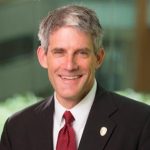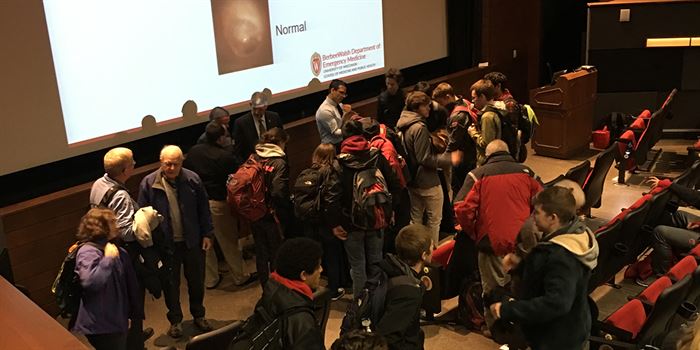CONTACT:
Jeanan Yasiri Moe
Director of Strategic Communications
[email protected]
608.890.1491
WARF Trustee Jim Berbee delivers Distinguished Entrepreneur lecture
MADISON, Wis. – Engaging more than 100 biomedical engineering students and faculty, Jim Berbee urged resilience and solution-driven innovation as he shared his own quest to retool a fixture of the doctor’s office.

Friday’s talk, “How hard can it be?” was part of the Tong BME Distinguished Entrepreneur Lecturer Series. The series is sponsored by businessman Peter Tong, chairman of the WARF board of trustees.
Berbee and Dr. Greg Rebella cautioned students against “over-engineering” and described their own trials and errors developing an improved otoscope – the classic handheld device used to peer into a patient’s ear and diagnose infections.
Despite a handful of hi-tech tweaks (e.g., LEDs; even an iPhone-mounted camera lens) the otoscope’s essential design hasn’t changed since the 19th century. That’s a problem, as poor visualization and misdiagnosis can lead to overprescribed antibiotics.
Berbee and Rebella, who are both assistant clinical professors of emergency medicine at UW–Madison, have worked for four years envisioning and prototyping a digital otoscope with greater resolution, patient comfort and ergonomics than ever before.
Most importantly, its slender tip (sporting a nanocamera, light-conducting fibers and only 2 mm in diameter) can help doctors access the ears of the smallest and fussiest patients – children.
Berbee, who submitted his own tympanic membrane to an on-stage demo, said the new and improved device may be commercially available as soon as 2018.

###